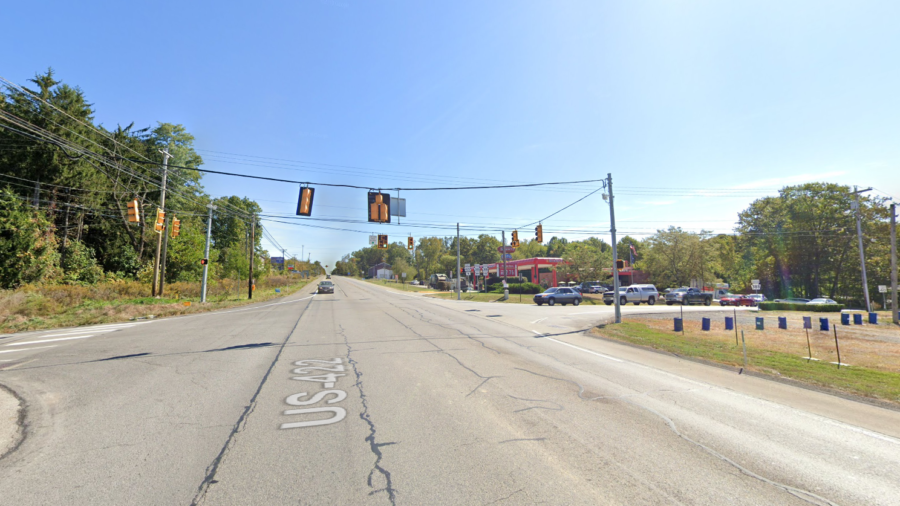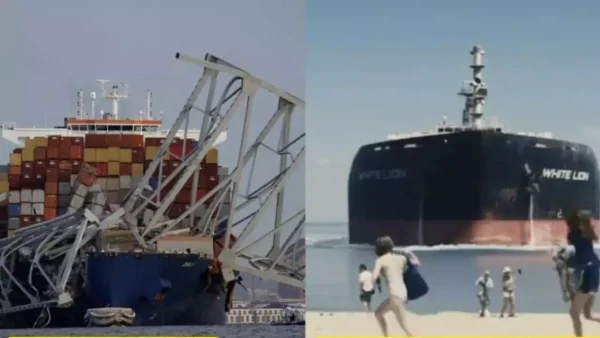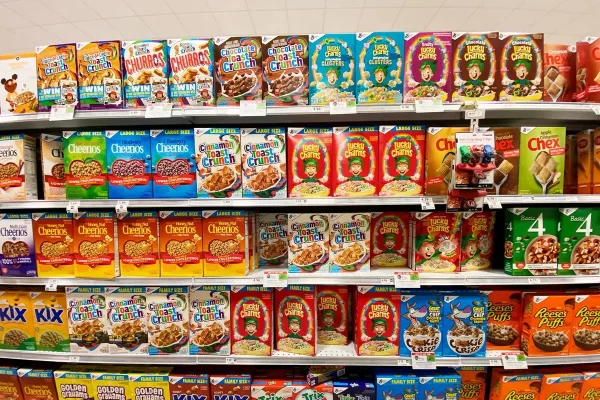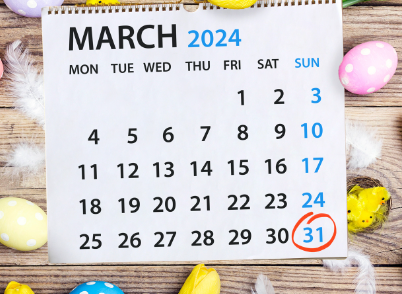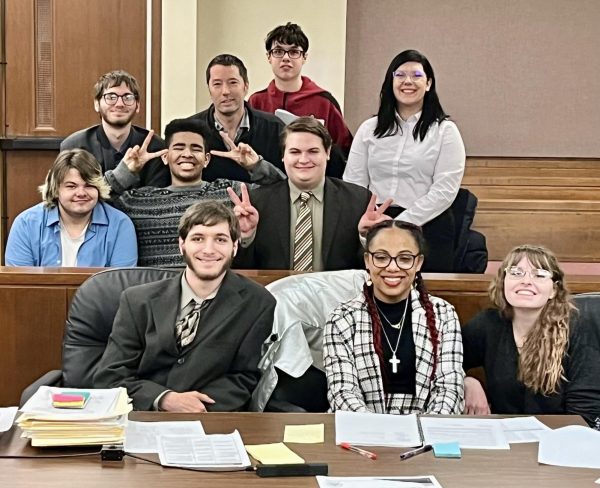Route 422 Is Dangerous. Here’s How To Fix It.
Route 422 between New Castle and Butler is dangerous. Just last month, a semi-truck rear-ended an SUV, which in turn caused the SUV to crash into another vehicle just beyond the intersection at Route 388, moving eastbound, hospitalizing three people. I believe this was caused by slow-moving traffic on the road due to a car possibly trying to make a left into (yet another) newly-built Dollar General. I won’t get started on Dollar General and their apparent effort to monopolize rural Pennsylvanian shopping, but I’ll instead critique the planners of this road. This intersection — not to mention Route 422 in general — is not suitable for businesses to be located.
I feel like it isn’t much of a coincidence that as I am in the middle of writing this article, Lawrence County Commissioner Dan Vogler brought to PennDOT’s attention that more safety measures are necessary along Route 422 following another accident involving a truck rollover. Cited was a November 2018 pileup involving a bus, semi, and four other vehicles, which resulted in multiple people entrapped in their cars. According to the Shenango Fire Chief, most accidents along the road are due to driver error, not the road design. I partially disagree.
Route 422 is technically a ‘stroad,’ a word coined by an organization named Strong Towns that describes when a street, where people interact with businesses and residences, is combined with a road, a high-speed route between places. While most stroads are in urban and suburban areas, this one, in particular, is along a rural stretch of highway. If you take a drive down the road, you’ll notice an abundance of businesses along the route. Not to mention, there are a lot of semi-trucks on Route 422 as it is an arterial route connecting New Castle to Butler and Interstate 79. Some would argue that the 45-55 mph speed limits are too high for this road, but lowering the speed limit would be highly inefficient for intercity travel. Engineers built Route 422 in the 1950s and 60s as a higher-speed bypass to a road now known as Old Butler Road to reduce travel times to Butler and newly-constructed Interstate 79. The problem started with the road when townships permitted businesses and homes to attach their driveways to the road.
I know for a fact that this road is dangerous — my dad was rear-ended on this road. In 2015, traffic ahead of him came to a stop, and as he slowed down the woman behind him slammed into his car because she was following too closely. The accident caused my dad’s Toyota Camry to shoot across the road and settle on the opposite side of the highway. Luckily, no cars were coming in the other direction on the road, and he was uninjured, but the woman that hit him had to be transported by ambulance to the hospital. It is unknown if the woman was driving distracted.
I looked through the data released by the Pennsylvania Department of Transportation for the most recent year available: 2019. On the 8.7-mile stretch of highway between Business Route 422 and Interstate 79, there were 43 crashes involving 75 vehicles, injuring 22 people. That’s almost five crashes per mile, just about double the number of wrecks on Interstate 376 per mile in Lawrence County. The traffic volume per day on these two highways is similar; Route 422 has around 12,000 to 13,000 vehicles per day, while Interstate 376 has between 12,000 and 19,000 automobiles per day, depending on your location. Keep in mind that Interstate 376 has two lanes of travel in each direction at all times. Route 422 has only one lane in each direction with a center lane, with only a few miles (which has the lowest number of accidents per mile) having two lanes each way.
Next year, I plan on studying Civil Engineering with a focus on Transportation Engineering at Youngstown State University. I’ve had an interest in the field for a while and have previously discussed solutions for traffic issues, including this one about the New Castle High School. This road, however, is a trickier one to design with innovation in mind. Most would suggest that turning the road into a limited-access highway is likely the best solution. I partially disagree. On most streets, I would recommend implementing a roundabout at problematic locations, but on Route 422, that is inefficient. There is too much traffic for a roundabout to be effective, whereas this road gets traffic counts similar to a busy highway. European countries use other methods to eliminate stroads and split traffic.
Due to cost restraints with my approach (see below), I think it is much more likely for PennDOT to widen the road and add Jughandles at the busiest intersections and separate both sides of traffic. A jughandle is a type of ramp that eliminates left turns at an intersection and instead uses a ramp that routes traffic onto the cross-road. The most notable local example is on Route 18 between Hermitage and Greenville. The problem with jughandles is that they are ineffective, becoming obsolete after just 20 years of use. Not to mention that they only reduce fatal crashes by 26%, much less than other alternatives such as a limited-access highway. On top of all of that, they will require land to be acquired where businesses are already located, especially at the intersection of Routes 388 and 422.
My Method of Fixing the Issue
First, local traffic must be separated from through traffic. A street should be constructed either along or behind businesses while removing access to the road from driveways. This proposal can easily be implemented by relocating businesses’ driveways to connect to Old Butler Road instead of Route 422. In some areas, such as the south side of the road between Hoover Road and Aiken Road (where McKesson’s warehouse is), a new access road is required parallel to Route 422 to accommodate this.
Secondly and equally important, either each major intersection needs converted to a safe, innovative signalized junction or converted to an interchange. Intersections that receive less traffic will either have to pass over the road to allow access to another side of the road or be “cul-de-sac’ed” on both sides. These intersections will be chosen based on the approximate traffic volume on that road if the information is available; otherwise, I will have to evaluate whether the road is necessary to connect.
Moving eastbound, the first major intersection is that of Hoover Road. To the north is Old US Highway 422, and to the south will be a new street to accommodate industrial traffic to warehouses. My solution is to bridge over US-422 at this intersection due to its proximity to the US-422 Business interchange. Traffic will instead be routed onto Old US Highway 422, where it will connect to Willowbrook Road to the west of the interchange. At this intersection, I think a partially-dual-lane roundabout is the best solution. The estimated traffic volume here is only 7000, compared to the 13,000 on the other side of the interchange.
The next intersection, moving east, is at Aiken Road, which can be cul-de-sac’ed before Route 422. Old Route 422 is still to the north, while the industrial street is to the south.
Continuing, at the intersection of Route 388, an interchange must be constructed. For this, I believe the best solution is to build a bridge over Route 388. On the proposed industrial access road to the south, a connector road would be built from the west of Route 388 and across Route 422. An interchange would be built here, likely a diamond interchange, to accommodate traffic. At some of the intersections, such as the connector road’s with the industrial access road, a roundabout may be built for safer movements. This is the same with the industrial access road’s intersection with Route 388, where it would only continue east for about 1/2 of a mile more.
The next intersection can be cul-de-sac’ed at Copper Road. About a mile down the road, a bridge must be built on Route 422 over Old Route 422. If capacity requires, this can be converted to an interchange by simply building two small ramps on each side of the highway, connecting to Old Route 422. Both Church Road and Mt. Herman Church Road would have to be cul-de-sac’ed. The same goes for Fox Road by Living Treasures, and Stoner Drive by Ben Franklin’s Taproom.
At Young Road, an interchange may be built to support local businesses and provide access to Rose Point Park. Rhodes Lane would be abandoned, whereas it is a dirt road. Mt. Hope Furnace Road would curve before Route 422 to connect to Old Route 422. Old Butler Road on the North end would be cul-de-sac’ed on both sides. McConnell’s Mill Road would be rerouted to turn east and instead connect with Route 19, where a roundabout would be constructed. The interchange with Route 19 can stay the same.
The interchange on Interstate 79 would be converted to a trumpet interchange, which would be routed west parallel to Route 422. As it passes west of the Pilot Travel Center, it would bridge over Route 422 near Currie Road. This interchange will become a Diverging Diamond Interchange to allow access to both Currie Road and the Pilot gas station. This would also allow quick access to Cooper’s Lake Campground.
Addressing Community Comments
One New Castle News reader commented that “if people would put their dang phones down, pay attention, and stop driving like idiots, then these things wouldn’t happen.” However, cell phones seem to not correlate with the number of accidents on this stretch of highway. PennDOT data from 2001 found that there were about 42 accidents along this route that year – just one less than the 2019 data. And while it is true that if people did pay more attention while driving, there would be fewer accidents, it’s simply not possible until we reach level 5 autonomous driving in all vehicles.
Another New Castle News reader pointed out that the road is the problem, not the drivers, which I agree with in part. As stated above, some factors are unsolvable until you reach level 5 autonomous driving and crashes may be caused by driver error. But ultimately, many accidents come down to the high-speed design with cross-traffic at intersections and pulling into businesses.
Another reader said to make the speed limit 45 miles per hour and place radar on poles to send tickets in the mail. The problem is that Route 422 needs to have a high speed as it is an artillery route connecting two cities with a major highway. Additionally, Pennsylvania has no state law or programs advocating speed cameras except for work zones. Those work zone cameras have proven as an effective method for reducing speeding. It may be a good idea for the state legislature to advocate for PennDOT and municipalities to implement speed cameras, as well as red-light cameras.
A reader pointed out that Dollar General is causing many of the issues with traffic too. They pointed out that removal of the left-turn movement there would reduce crashes. While this may be true, people will still turn there anyhow as there is no other way to get to the Dollar General while moving eastbound.
The final comment I would like to address is the one I agree with the most. “The speed limit on that road isn’t high enough and honestly they should be asking to make it multi-lane.” This is what my idea essentially accomplishes. And while someone pointed out that several different traffic warning options can be incorporated, realistically speaking, it probably won’t do much. So yes, PennDOT should be making the road wider and increasing the speed limit. But to do this, PennDOT must also make the businesses along the road accessible without the use of a center-turning lane.
Conclusion
In conclusion, Route 422 needs to change drastically. Through advocation by the drivers of the road and local supervisors, I think we can get this done. PennDOT seems to usually ignore issues in a small county like Lawrence, which is why I think we don’t have any roundabouts. Increasing the capacity of Route 422 can also do wonders in the event of a closure requiring a detour on the four interstates that surround Lawrence County. So, why wait? PennDOT should begin studying this route now.


